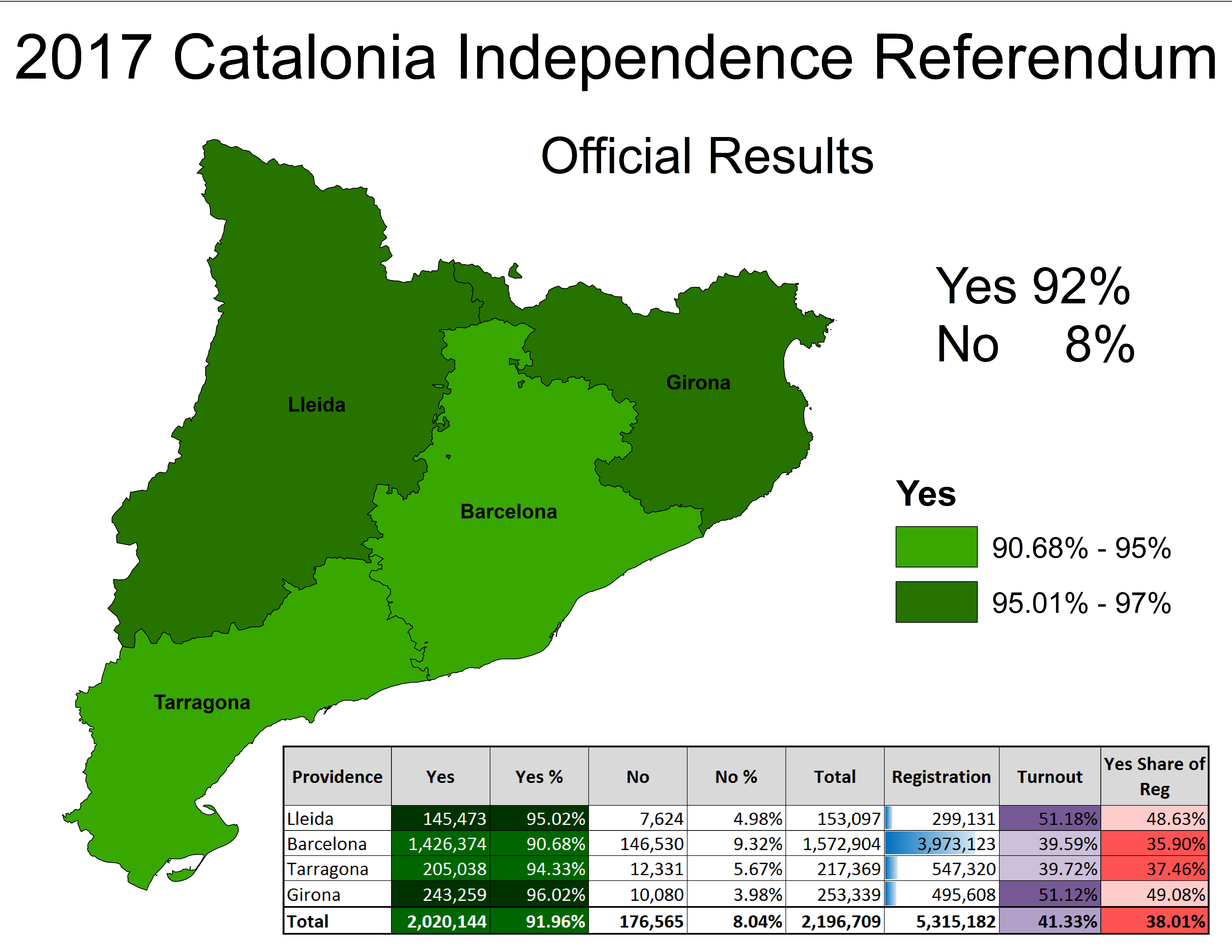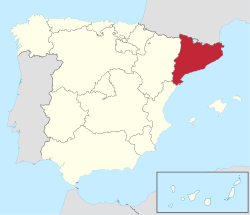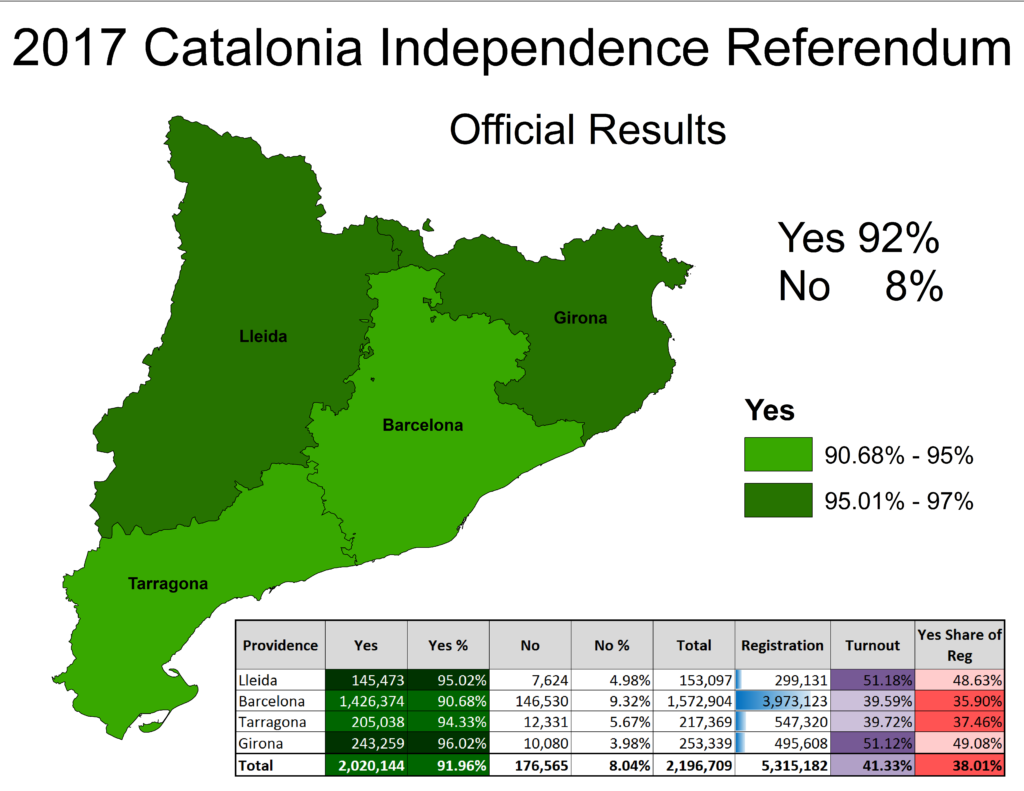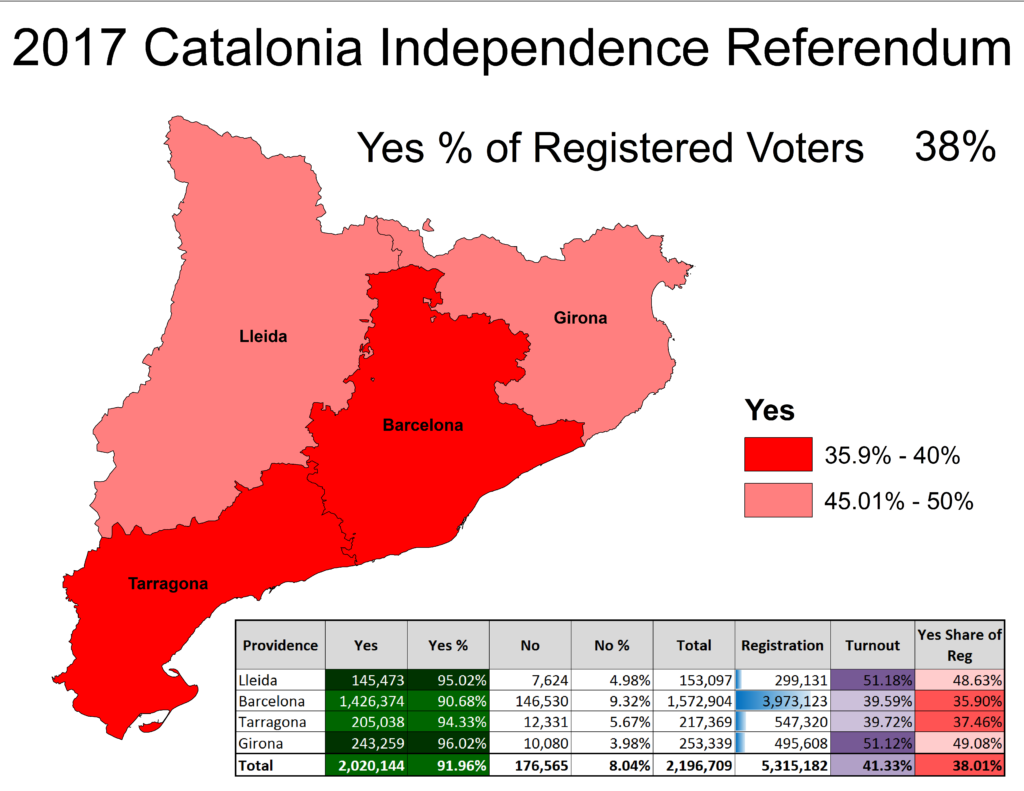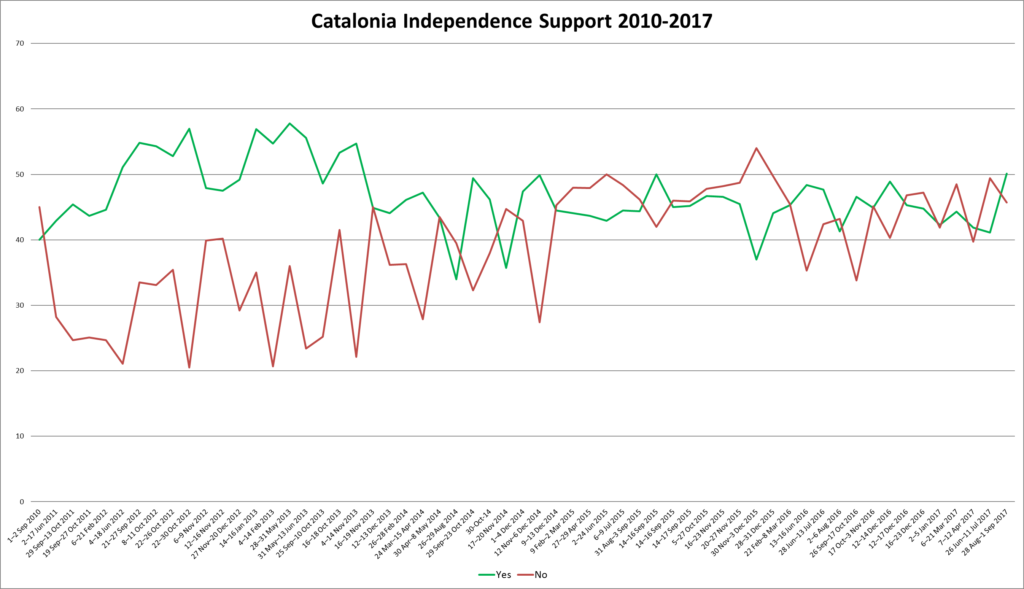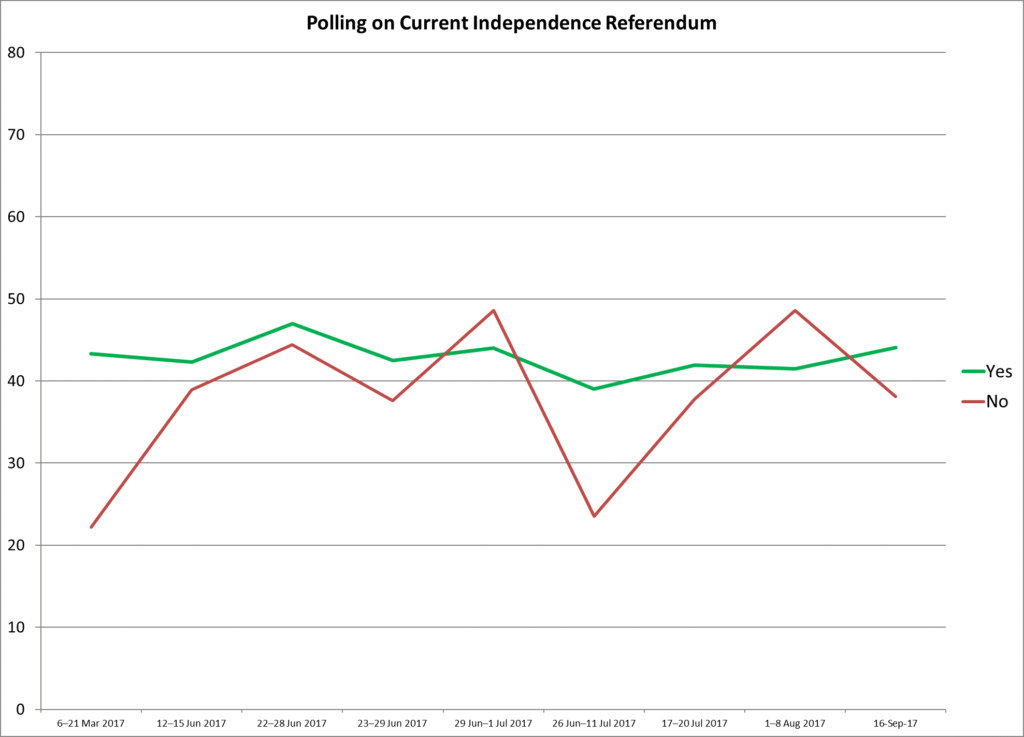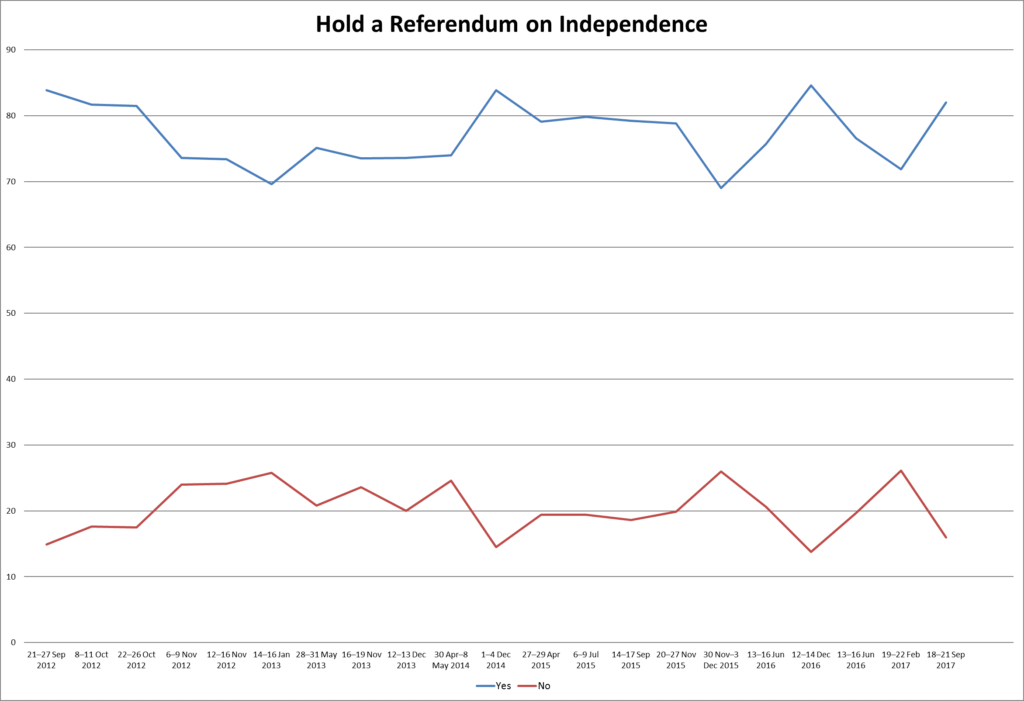European politics this week has been dominated by a region of Spain that most people have likely never heard much about: Catalonia. This autonomous community in the NE end of Spain has thrown Spanish and European politics into chaos with its recent referendum to secede and become its own nation.
Catalonia is culturally very different from much of Spain and a rough history and political differences have resulted in a secessionist sentiment constantly bubbling up in the region. The area is a well-off major tourist destination that features a different culture and language than the rest of its mother country. A comprehensive breakdown of the differences between Catalonia and the rest of Spain can and history of secession as an issue can be found here.
Catalonia’s independence push has ebbed and flowed but hit a fever pitch in recent years. Catalonia held a self-determination referendum in 2014 that passed with 80% (though with opposition forces largely boycotting) and in the 2015 Regional Elections the Junts pel Sí (JxSi) Party, who’s main focus is pushing independence, won control of the Catalan Parliament. The local government then pushed for another referendum on independence to be held October 1st, 2017. The Spanish government responded by declaring the referendum illegal and threatening to stop the vote by force. Internet and finances were restricted in the region and on election day state police clashed with voters as the seized ballot boxes and closed voting stations. Hundreds of unarmed Catalonians were injured by police rubber bullets and batons. The government’s actions led to mild concern from other European nations and resulted in strikes in Catalonia. Meanwhile, the referendum passed with 92% of the vote, with the opposition largely boycotting again.
My view is that the Spanish government’s response to the referendum was a gross overreaction that is unbecoming a democracy. Not only were the actions of the state out of line, they also were counter-intuitive. The state actions will only further inflame secessionist pushes in the providence. What makes the Spanish government’s actions so foolish is that if the referendum has just been allowed to take place, secession would have very likely failed at the ballot box.
Do a Majority of Catalonians Want to Secede?
Catalonia’s referendum to secede passed overwhelmingly, but the YES margin doesn’t really tell the story of popular support in the region. Opponent of secession have routinely boycotted these referendums, leading to low turnout that zaps the legitimacy of the results. Data from Catalonia is tricky to come by due to some sites still being down. For analysis, I opted to consolidate the referendum results by the four provinces of Catalonia. Due to odd borders these province-level results are estimates but may be off by a point or two if and when we ever get more number breakdowns from the local government.
Support for independence was strongest in Lleida and Girona, which share a border with France, and weakest in Barcelona, the most populace (and biggest tourist destination) province of the area. While 92% looks strong, it is a lot weaker when you realize only 41% of registered voters cast Yes or No ballots.
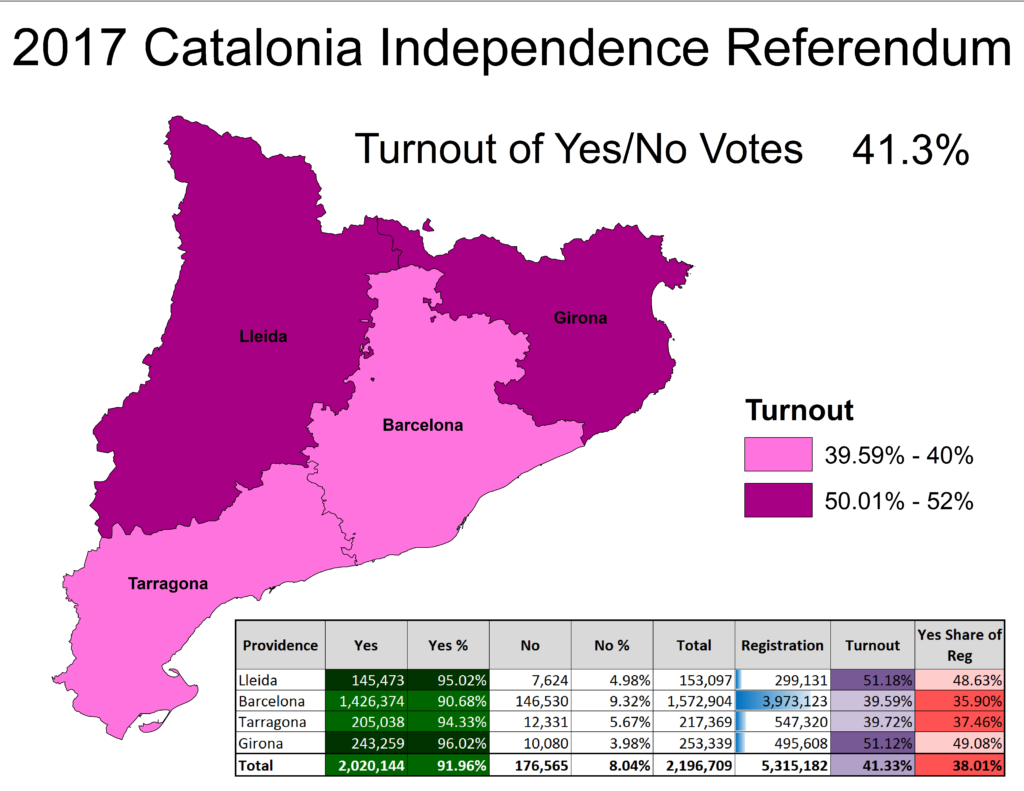 The local government puts their turnout at 42% by counting blank and invalid votes, but we aren’t doing that here. Turnout only hit 51%, highest in regions with the strongest YES vote, but still well below what the local government was hoping for.
The local government puts their turnout at 42% by counting blank and invalid votes, but we aren’t doing that here. Turnout only hit 51%, highest in regions with the strongest YES vote, but still well below what the local government was hoping for.
This means only 38% of registered voters actually voted YES to secede. The Catalan Government insists that police closing voting locations kept over 700,000 from the polls. This, however, is contradicted by the fact a registered voters could cast a ballot at any location and few lived in regions where no voting options existed; even with police closures.
When we look at the YES campaign verses registered voters, not a single province voted to leave Spain.
Girona and Lleida, which had the strongest turnout and strongest YES vote, came closes to seeing a majority of their registered voters back independence. Meanwhile, Barcelona, which is over half the voters of the region, only saw 35% support independence. These results conform closely with the 2015 regional elections that saw the rise of a pro-independence party.
The 2015 elections saw JxSi win control of parliament in Catalonia and it did so with over 50% support in Lleida and Girona, the two regions most favorable to secession. The party, meanwhile, couldn’t crack 40% in Barcelona, dragging its region-wide share down. Barcelona is clearly not in the independence camp and its opposition would make any secession campaign an uphill climb.
The results do not indicate a majority of Catalonians want to secede. Spain’s actions no doubt lowered turnout, but its doubtful they did it to such an extent that YES could have secured 50% of the registration. Turnout was only 200,000 voter lower than the 2014 self-determination referendum that was allowed to proceed without police interference. Even if 700,000 votes were turned away (a figure from the local government with no independent verification) they would have needed to be 100% YES to get independence over 50% of registered voters. It seems clear that had the referendum simply taken place, the YES campaign would still have failed to get up to, or maybe even close to, 50% of registered voters — an informal but crucial data point needed for any referendum result to be taken seriously on such an important matter. Instead, this fact has been lost in the coverage about Spain’s actions on October 1st.
Public Opinion on Secession in the Region
Election results aside, we have plenty of data on this issue. Polls on secession going back to 2010 show a spike for independence at one point but now show a population deeply split on the matter.
The region is divided but secession notably doesn’t cross 50% even when its ahead.
Polling for this referendum showed independence and remaining neck and neck, but again with independence failing and polling below what the generic independence polls show.
Brexit referendum aside, the old rule is still largely true, voters stick with status quo when unsure about the results of chance. Catalonia is a well-off area and convincing voters independence could disrupt that prosperity could have a real effect on a campaign.
However, the most important data point is this, polling on if a referendum should have been held. Here we see and overwhelming majority prefer a referendum be held.
Catalonians may be divided on secession but they favor being given a voice on the matter. One poll (not in chart) even specifically asked if voters would favor holding a referendum the Spanish Government deemed illegal; a narrow majority said yes. Catalonians want to be able to vote and make their opinion on their future known. The Spanish government trampled all over that on October 1st.
Moving Forward
Catalonia’s government is pushing to announce independence next week. I do not favor this due to the data pointing to a majority not siding with separation from Spain. However, much of this drama falls on the Spanish government, which has inflamed tensions with its actions on the day of the referendum. A peaceful October 1st would have very likely yielded results that ensured Catalonia remained a party of Spain. Now the future is much less clear.

